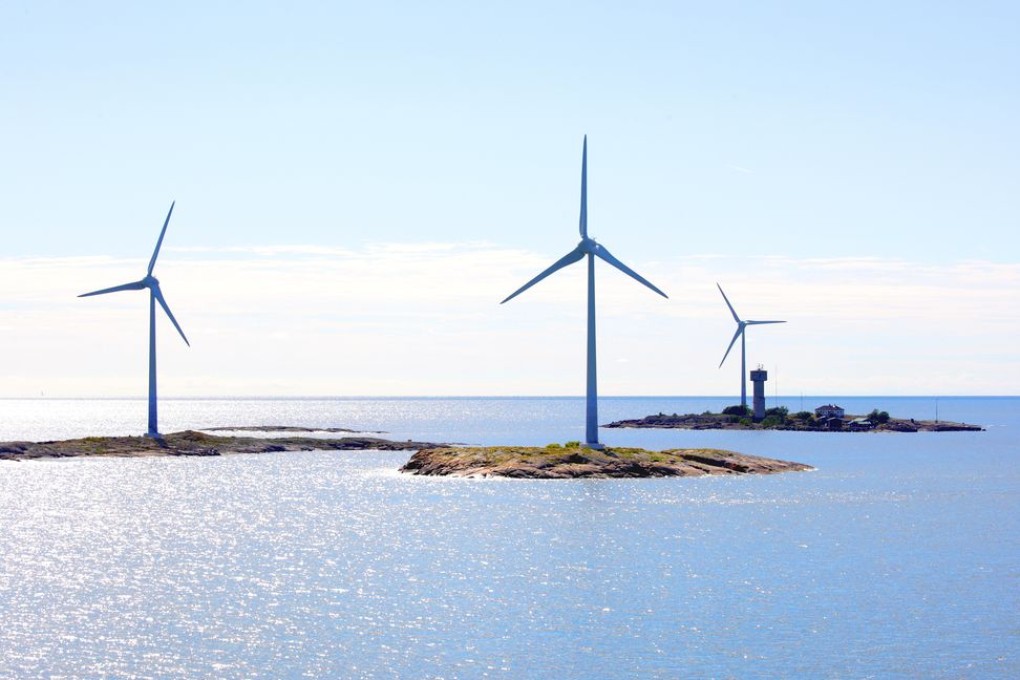Pursuit of clean energy sources
Finland lies partly in the Arctic Circle and is the coldest country in the European Union (EU). So power, and likewise heating, is more than just a mere necessity - it's absolutely vital to maintain the country's high economic and social standards.

Finland lies partly in the Arctic Circle and is the coldest country in the European Union (EU). So power, and likewise heating, is more than just a mere necessity - it's absolutely vital to maintain the country's high economic and social standards.
As a result, Finland has become one of the leading proponents of finding sources of alternative energy.
At present, around a quarter of primary energy consumed in Finland is covered by renewable sources, which is one of the highest figures among all industrialised nations and the third-highest in the EU.
The Finnish government actively promotes using alternative energy, and has laid out a wide-ranging strategy. The major points include maximising the use of bioenergy in the forest industry, a goal of tripling the use of wood residues from forestry as a fuel and raw material to 12 million cubic metres by 2020, and the installation of heat pumps, bioenergy and solar energy systems for space heating.
Crucially, Finland aims to end the use of fossil oil for heating before 2030, and to increase the use of agricultural biomass and biogas as fuels.
By 2020, installed wind power capacity should have increased to 2,000MW from the present 120MW, and off-shore wind power will be given a boost by leasing the sea areas cheaply.
The government also plans to encourage power upgrades in old hydropower plants and the construction of some new hydropower plants, while it's hoped to increase the use of recycled fuels by 150 per cent within the next five years.
A sterling example of Finland's relentless pursuit of alternative energy is the 140MW biomass gasification plant in Vaasa - one of the world's largest - which was designed to cut coal use by 40 per cent and fired up for the first time in March 2013.
The technology for the plant - supplied by Finnish process technology firm Metso - includes fuel handling, a large-scale dryer and a circulating fluidised bed gasifier, and modification work on an existing coal boiler and a DNA automation system.
"Coal boilers still account for the majority of power production in the world," says Jyrki Holmala, president of Metso's power business division. "Bio-gasification technology of this scale offers a new, cost-effective option for increasing the share of biomass and, consequently, for significantly decreasing the use of and emissions from coal."
Nearly half of the coal previously used by the Vaasa plant has been replaced with gasified biomass. This makes the solution highly environmentally friendly, enables the flexible use of different fuels and significantly extends the life of the plant.
Finland's progress in exploring alternative energy sources has had benefits for other parts of the world, notably China. In November last year, Helsinki-based GreenStream - which provides brokerage, advisory and financial services related to green renewable electricity certificates, emissions trading and greenhouse gas offset projects - signed a co-operation and energy-efficiency project contract with Delong Steel Group, which is headquartered in Beijing.
The project is being carried out at Delong's mill in Xingtai using technology devised by Finnish sustainable energy firm Sarlin Oy, with the aim of significantly decreasing the energy consumption of the steel mill's compressed air system.
"Expanding our business to the steel sector is an essential part of an accelerated roll-out of our energy efficiency in China," says GreenStream CEO Jussi Nykanen.
"Sarlin's solution is a perfect addition to our technology portfolio. The core of our concept is to find the best and most robust solutions for our Chinese clients."
Sarlin CEO Kari Jaminki says: "Our system will improve the quality of compressed air, facilitate the maintenance of compressors and bring energy savings to the client.
"We would not have been able to make this project happen without GreenStream's excellent local network and strong cultural know-how. We needed a strong partner to access China, and GreenStream was able to make our first China reference become true in record time."
GreenStream's move into China was aided by a Euro3.5 million (HK$30.9 million) investment from Finnish Funding Agency for Technology and Innovation (Finnfund).
"The best solutions can only be found by expanding the technology portfolio, and we aim to do this primarily with appropriate Finnish technologies," says Tuomas Suurpää, Finnfund's senior investment manager.